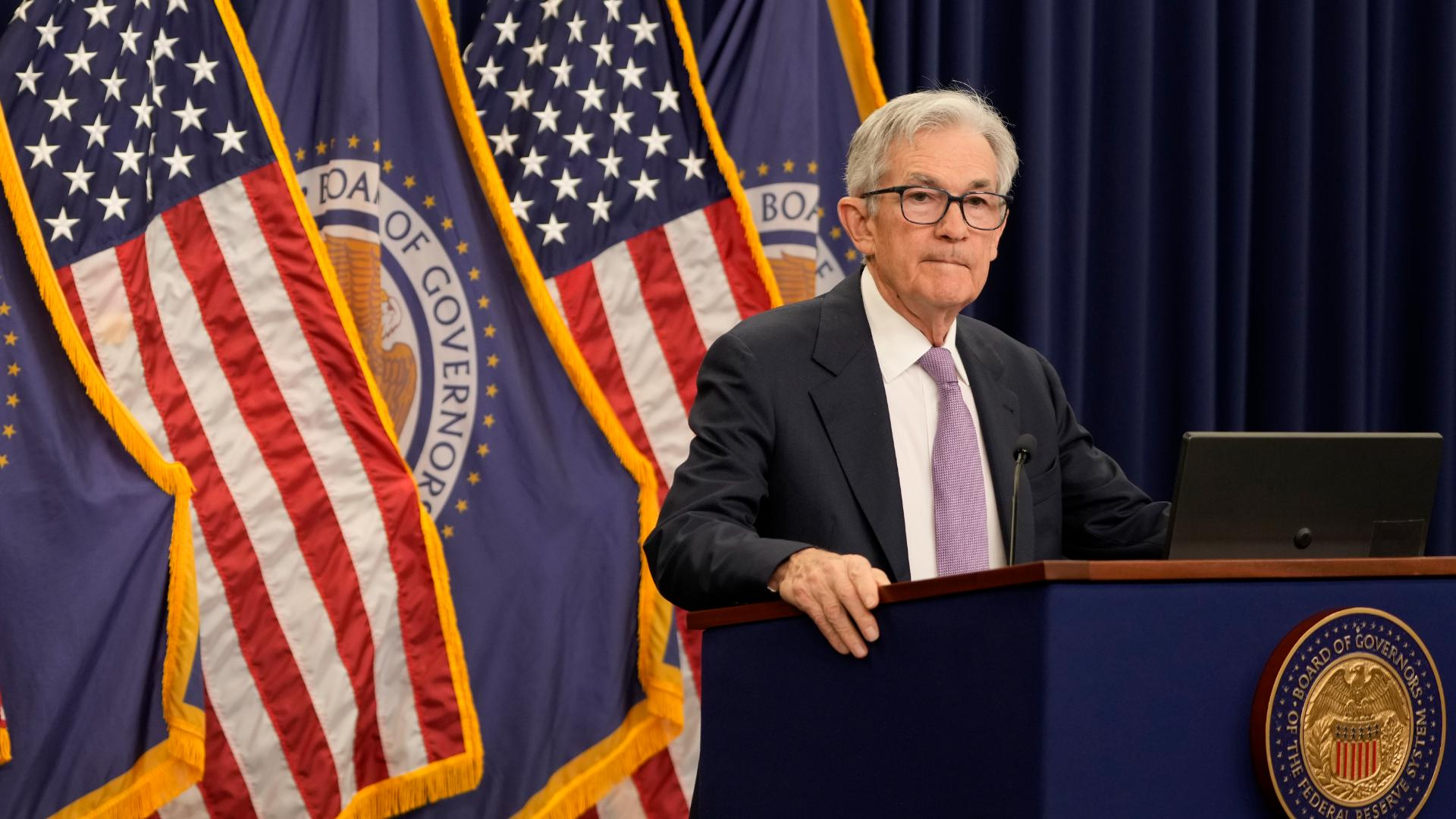
Federal Reserve Rate Cuts: What Consumers Can Expect
Federal Reserve rate cuts are making headlines as the central bank works to stimulate economic growth amidst fluctuating inflation rates. The recent decision to lower key interest rates by half a percentage point marks the Fed’s first rate cut in four years, offering potential relief to consumers grappling with high mortgage rates and burdensome consumer debt. As borrowing costs decrease, homebuyers and those with credit card and car loans stand to benefit, fostering a climate for increased spending and investment. However, the lasting economic impact of these adjustments remains uncertain, especially as the Fed balances the need to curb inflation with the imperative to sustain job growth. With further cuts anticipated, observers are keen to see how these shifts will influence not only the housing market but also overall economic resilience in the months to come.
In the landscape of economic policy, actions such as a reduction in key borrowing costs by the Federal Reserve signal significant shifts for both consumers and investors. This strategic move, often referred to as monetary easing, is designed to lower interest rates, paving the way for more accessible loans and mortgages. As businesses and individuals navigate the implications of these adjustments, the hope is for increased consumer spending and improved debt management. Analysts are closely watching the effects on inflation dynamics and housing affordability, as these rate cuts may serve as a double-edged sword in balancing growth with financial stability. Ultimately, understanding the broader economic context is essential as communities feel the reverberations of these fiscal strategies.
Impact of Federal Reserve Rate Cuts on Consumer Debt Relief
The recent Federal Reserve rate cuts have opened the door for potential relief for consumers grappling with debt. Lower interest rates typically mean reduced costs for borrowing, which is particularly beneficial for those facing high credit card balances and personal loans. As the Fed aims to stimulate the economy by cutting interest rates, consumers can expect somewhat easier access to funding and lower payments on their existing debts. This scenario gives borrowers more breathing room, allowing them to channel funds toward essentials, savings, or additional spending, thereby boosting overall economic activity.
However, the timeline for tangible relief may vary significantly among consumers. While the rate cuts promise to create favorable conditions for debt repayment in the long term, immediate effects are less predictable. Creditors may not adjust their rates immediately in response to the Fed’s actions, leading to a delay in the benefits consumers experience. Additionally, overall economic conditions, such as consumer confidence and employment rates, will influence how quickly individuals can capitalize on these lower rates, highlighting the complexity of economic recovery following the Fed’s decisions.
The Connection Between Federal Reserve Rate Cuts and Mortgage Rates
As the Federal Reserve continues to navigate monetary policy with strategic rate cuts, the implications for mortgage rates are significant. Historically, a reduction in the federal funds rate often leads to enough downward pressure on mortgage rates, making it more feasible for homebuyers to secure affordable loans. Economist Jason Furman suggests that, with the Fed easing policy, mortgage rates are set to trend lower. This reduction could encourage more individuals to enter the housing market, potentially addressing some of the housing affordability challenges currently facing many cities.
That said, the relationship between Fed cuts and actual mortgage rates isn’t always linear. While experts expect a gradual decline in mortgage rates, other factors such as inflation rates and broader economic stability will play crucial roles in determining where these rates ultimately land. Moreover, buyers should remain cautious—although current trends may suggest a correlational drop, there is still uncertainty about how long it will take before these benefits fully translate into substantial financial relief for prospective homeowners.
Economic Impact of Federal Reserve Rate Cuts on Business Growth
The Federal Reserve’s decision to cut interest rates by half a percentage point signals a proactive approach to fostering economic growth. For businesses, particularly small to medium enterprises, lower borrowing costs can facilitate expansion and investment. With cheaper access to loans, companies might increase hiring, invest in upgrading equipment, or innovate their products and services. This expansion of business operations can ultimately lead to a ripple effect in local economies as more jobs become available and consumer spending rises.
However, the immediate economic impact may be muted. Experts warn that while the rate cuts can potentially boost growth over the next six to twelve months, companies may adopt a wait-and-see approach due to lingering economic uncertainties. Factors such as global market stability, supply chain issues, and changing consumer demands will dictate the effectiveness of these cuts in stimulating business growth. Thus, the timing and severity of economic recovery following the Fed’s actions will largely depend on how businesses adapt to these changing dynamics.
Inflation Trends in Light of Federal Reserve Rate Cuts
As the Federal Reserve implements rate cuts, there is a focal point around how these decisions will influence inflation levels. While the central bank’s actions aim to stimulate economic activity, the risk of rising inflation remains a central concern. Lower interest rates can lead to increased consumer spending, which, in the absence of corresponding supply increases, could fuel inflationary pressures. Fed Chairman Jerome Powell has pointed out that the economy is performing well, but careful monitoring will be essential to managing inflation amidst these rate cuts.
Higher inflation brought on by increased spending can complicate the Fed’s goals, especially if they lead to a surge in consumer prices that outpaces wage growth. As the Fed attempts to strike a balance between stimulating the economy and controlling inflation, it faces substantial challenges. Monitoring inflation indicators will be crucial in determining whether further rate cuts are appropriate, or if the Fed must recalibrate its strategy to avoid unintended economic consequences.
Consumer Expectations Following Federal Reserve Rate Cuts
Consumer sentiment in the wake of the Federal Reserve rate cuts can affect overall market dynamics significantly. While many expect that reduced borrowing costs will lead to more consumer spending, it’s essential to recognize that consumers often weigh factors such as job security and economic stability before increasing their expenditure. Thus, the Fed’s actions may bolster confidence among consumers, but tangible changes in spending habits may take time as individuals assess their broader economic circumstances.
Furthermore, the relationship between a rate cut and consumer spending trends can be complex. Those with existing debts may prioritize paying down balances rather than engaging in new purchases. Consequently, while the expectation is that rate cuts will invigorate consumer behavior, the immediate aftermath may see a more gradual shift. Ultimately, how consumers adapt to and leverage these changes in interest rates can shape the effectiveness of the Fed’s monetary policy in revitalizing the economy.
Long-Term Effects of Federal Reserve Rate Cuts and Economic Stability
The long-term effects of the recent Federal Reserve rate cuts on economic stability are still unfolding. Historically, interest rates serve as a tool for regulating the economy, but excessive cuts can lead to a scenario of prolonged low rates that spark unintended consequences, such as asset bubbles or increased consumer debt. As the Fed navigates its policy adjustments, it must do so with caution to avoid undermining economic stability and sustainability over the long run.
Moreover, persistent low rates may challenge the Fed’s ability to react effectively to future economic downturns. If rates remain artificially low, the central bank may find itself with limited room to maneuver in times of inflationary pressure or economic contraction. Thus, while the immediate effects of the Fed’s cuts may support growth, the broader challenges of managing long-term economic stability will require thoughtful consideration of all components affecting the economic landscape.
Consumer Debt Trends: Challenges and Opportunities After Rate Cuts
As interest rates begin to decline due to the Fed’s actions, many consumers hope to see some easing in their debt burdens. Yet the reality is that consumer debt trends are complex and multifaceted. As some borrowers begin to benefit from lower rates on their credit products, others may still find themselves mired in high-interest debt, especially if lenders are slow to adjust their rates. The overall economic environment, including factors like employment rates and inflation, will influence how effective these rate cuts will be in providing widespread relief.
Opportunities for consumer debt relief do exist, however. Inflation-controlled, reduced rates can encourage consumers to refinance existing debts, particularly for homeowners looking to consolidate mortgages or take advantage of improved terms. This potential for refinancing could pave the way for consumers to enhance their financial stability in the long run. Nevertheless, navigating these opportunities will require consumers to remain educated about their options and ensure they are working with responsive financial institutions.
Real Estate Market Reactions to Federal Reserve Rate Cuts
The real estate market is one of the most sensitive sectors to changes in interest rates, and the recent cuts from the Federal Reserve are no exception. Home mortgage rates are broadly expected to decrease as the market adjusts to the Fed’s policy direction, potentially leading to increased home sales and an uptick in construction activity. As loans become more affordable, first-time homebuyers may find it easier to enter the market, thereby enhancing the overall demand for housing.
Yet, the impact of these cuts will depend on various dynamics within the housing market. Supply chain interruptions and inventory shortages may continue to constrain the market’s responsiveness to lower mortgage rates. Additionally, while lower rates generally promote home buying, if prices remain high due to demand outpacing supply, affordability may still be an issue for many buyers. Consequently, while the Fed’s actions can catalyze favorable conditions, external market factors will critically inform the real estate market’s evolution.
Consumer Confidence and Its Link to Federal Reserve Rate Cuts
Following the Federal Reserve’s rate cuts, understanding consumer confidence becomes essential to evaluating potential economic outcomes. When the central bank decreases interest rates, it often aims to boost consumer spending by fostering a more favorable borrowing environment. Increased consumer confidence can lead to heightened spending on non-essential goods, thus stimulating economic growth. However, the effectiveness of rate cuts in boosting confidence hinges on broader economic conditions, including job stability and inflation rate perceptions.
Additionally, while many consumers may view the Fed’s action as a signal for economic recovery, feelings of uncertainty may linger. Factors such as personal financial situations and future economic forecasts can heavily influence consumer attitudes toward borrowing and spending. Therefore, monitoring consumer sentiment alongside the impacts of rate cuts will be crucial in guiding subsequent Fed actions as they analyze the effectiveness of their monetary policy adjustments.
Frequently Asked Questions
What are Federal Reserve rate cuts and how do they affect interest rates?
Federal Reserve rate cuts refer to the decision made by the Federal Reserve to lower its key interest rate, which influences borrowing costs across the economy. When the Fed cuts rates, it generally reduces interest rates on loans, including mortgages and car loans, making it cheaper for consumers to borrow money and stimulate spending.
How do Federal Reserve rate cuts impact mortgage rates?
Federal Reserve rate cuts are likely to lead to lower mortgage rates as the financial markets adjust to the reduced cost of borrowing. As the Fed continues to ease policy, consumers can expect mortgage rates to decline, which could enhance housing affordability and incentivize home buying.
What economic impact can we expect from recent Federal Reserve rate cuts?
The recent Federal Reserve rate cuts are expect to stimulate economic growth by encouraging consumer spending and investment. Lower interest rates can lead to increased job creation and a slight rise in inflation, which in turn stimulates demand in the economy over the next 6 to 12 months.
Will Federal Reserve rate cuts provide relief for consumer debt?
Yes, Federal Reserve rate cuts may offer some relief for consumer debt, especially for those with credit cards and loans. However, the extent of relief consumers experience will depend on the timing and effectiveness of these cuts, as other factors such as repayment risk also play a role in determining final interest rates.
How do Federal Reserve rate cuts affect inflation?
Federal Reserve rate cuts can have a dual effect on inflation. While lower interest rates generally encourage spending and can lead to increased inflation, the Fed carefully monitors inflation trends to ensure that rate cuts do not exacerbate inflationary pressures. Ultimately, the goal of the rate cut is to strike a balance to support economic growth without allowing inflation to rise uncontrollably.
What should consumers expect regarding interest rates in response to Federal Reserve rate cuts?
Consumers can expect interest rates to decline in response to Federal Reserve rate cuts, although the exact timeline may vary. While rates on products like mortgages and car loans are likely to decrease, they may remain higher than pre-pandemic levels for some time due to ongoing economic uncertainties.
Are further Federal Reserve rate cuts anticipated in the near future?
Yes, further Federal Reserve rate cuts are anticipated, as some economists predict that the Fed may cut rates by additional increments throughout the year. However, the actual timing will depend on various economic factors, including inflation data and labor market conditions.
How do Federal Reserve rate cuts help address issues like housing affordability?
By lowering interest rates, Federal Reserve rate cuts can make mortgage loans more affordable, which is expected to improve housing affordability for potential homebuyers. Lower rates mean lower monthly payments on mortgages, thus easing some of the financial strain on consumers in the housing market.
What is the relationship between Federal Reserve rate cuts and consumer debt levels?
Federal Reserve rate cuts can indirectly affect consumer debt levels by making borrowing cheaper. As interest rates decline, consumers may be encouraged to take on new loans or reduce existing debt burdens, benefiting from lower payments. However, rising inflation or other economic challenges may counteract these benefits.
| Key Point | Details |
|---|---|
| Rate Cut Announcement | The Federal Reserve cut a key interest rate by half a percentage point, the first reduction in four years. |
| Impact on Consumers | The cut will benefit credit card holders, car loan borrowers, and homebuyers by lowering borrowing costs and potentially boosting spending. |
| Future Rate Cuts | Fed signals likelihood of two more rate cuts before year-end. |
| Inflation Management | The Fed aims to balance slowing growth to curb inflation without triggering high unemployment. |
| Effect on Mortgage Rates | Mortgage rates are expected to decline as the Fed continues to ease policy, potentially improving housing affordability. |
| Consumer Debt Relief | Consumers may see minimal immediate relief on credit card and loan rates; significant decreases may not occur for at least a year. |
Summary
Federal Reserve rate cuts are set to bring some relief to consumers, signaling a pivotal moment for the economy. By lowering borrowing costs and aiming for further reductions, the Fed is prioritizing economic growth while being mindful of inflation. Homebuyers, credit card holders, and businesses can anticipate potential benefits as rates continue to align with easing policies. However, the impact on affordability and debt management will take time to materialize. As the Fed navigates a delicate balance between growth and inflation, the coming months will be crucial for assessing the sustained benefits of these significant rate cuts.


